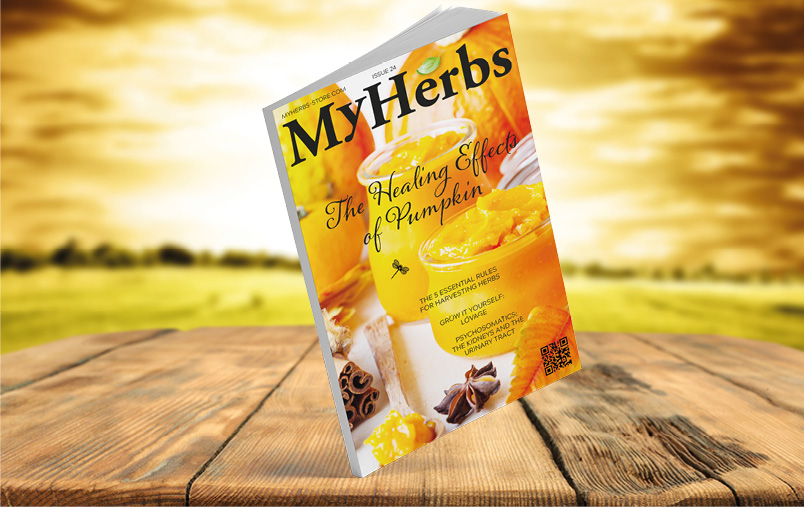If you have acute inflammation caused by gout, you need to go to the doctor, who will treat it with pharmaceutical drugs. Putting ice on the inflamed area is also helpful, along with using certain herbs which for centuries have been a proven remedy to mitigate the effects of chronic gout. And which herbs are they?

1) Common Nettle
(Urtica dioica)
The common nettle, a well-known panacea among herbalists, helps with gout, too. Look for its leaves and stems–ideally those of young plants of up to 8 in. / 20 cm–and try to dry them quickly so that they retain their green color. If you don’t want to pick and dry nettles yourself, you can buy them dried at a pharmacy or in an herbal store.
Drinking nettle tea can help the body get rid of excess uric acid, which causes gout. At the same time, it cleanses the blood, helps lower blood sugar, functions as a diuretic, and overall strengthens the organism. The tea treatment should not last more than 5 weeks and should only be repeated after a 3-week break.
NETTLE TEA AGAINST GOUT
You will need:
1 tbsp. chopped dried or fresh nettles
1 cup of water
Directions:
Pour boiling water over the nettles, leave to infuse for 10 minutes and strain. Drink 3 times a day after a meal.

2) Celery
(Apium graveolens)
Celery is mostly known as a cooking ingredient, but it also works wonders as a medicinal herb. The most useful and popular way to use it for medicinal purposes is to squeeze juice from its raw tuber. It may not be everyone’s cup of tea but in this form, celery has the biggest healing potential.
Celery helps to drain and detoxify the body and supports metabolism. Thanks to this, it helps with kidney problems and urinary tract problems (including urinary stones), and also with rashes and spots on the skin, rheumatism, and gout. It is also considered an aphrodisiac for men. When taken in larger quantities, it can irritate the kidneys and is not suitable for pregnant women.
In case of problems with gout, it is advisable to drink about cup / 50 ml of raw celery juice every day. The treatment should not last longer than 4 weeks, at which point you should take a 3-week break before repeating it.

3) Horsetail
(Equisetum arvense)
Horsetail is very widespread – you can find it growing in abundance in a variety of places such as gardens, meadows, and verdant fields. Although gardeners consider it an insistent weed that is tricky to remove, it is nevertheless beneficial as a medicinal plant. It is harvested for its green stems from June to September.
Containing silicic acid, saponins, organic acids and many other active substances, horsetail was a very popular medicine even in ancient times. It helps with kidney and urinary tract problems and can relieve kidney and urinary stones. It can also stop bleeding (stomach, uterus, nose) and helps with inflammation of the mouth and tonsils or toothache.
It can also relieve rheumatic and nerve pains, and the pain caused by inflammation of the joints in gout. When used externally, it helps to treat poorly healing and inflamed wounds.
Horsetail decoction for gout pain
You will need:
4 tsp. chopped horsetail
2 cups / 0.4 l of water
Directions:
Place the chopped horsetail in boiling water, cook on a low heat for 5 minutes, then cover and let stand for 5 minutes before straining. Drink a cup in the morning and in the evening after meals.

4) Butterbur
(Petasites officinalis)
Butterbur is a damp-loving plant found mainly on the banks of rivers and ponds. It is somewhat similar in structure to the coltsfoot but the flowers are beige to pink in color. The leaves form ground rosettes and the plant has quite an unpleasant odor. It is the root and rhizome which are used medicinally.
It is used to reduce fever, promote sweating, and is a supportive remedy in the treatment of epilepsy and gout. Butterbur is also used externally – fresh leaves are applied as a poultice on sprains and dislocated joints, on abraded skin, and on wounds that are difficult to heal.
BUTTERBUR ROOT INFUSION AGAINST GOUT
You will need:
1 tsp. butterbur root
1 cup / 250 ml water
Directions:
Place the root in water and leave to rest overnight. The next day, heat the liquid and then strain. Drink half a cup 3 times a day after meals.

5) Ash Tree
(Fraxinus excelsior)
As its name suggests, the ash tree is a beautiful ornamental tree that can be found in many parks, arboretums and gardens. It has great mythological significance, having been worshiped by the Celts and appearing in Norse mythology as Yggdrasil, as the tree of the world. This tree can live up to several hundred years, grow up to 40 meters high and is also known for its high quality hardwood.
The bark of the young thin branches and the seeds have been used for medicinal purposes for a long time. Ash can relieve joint pain caused by gout and rheumatism, treat inflammation, lower cholesterol and can also help with diabetes. And that’s not all – it also drains and cleanses the body, bolsters the immune system and is good for strengthening the body during convalescence. Nevertheless, ash tea is not recommended for long-term use.
ASH TEA FOR GOUT PAIN
You will need:
1 tsp. chopped young ash bark
1 cup / 250 ml water
Directions:
Leave the bark to infuse in water overnight. Boil the water the following morning, ideally for about 4-5 minutes. Then strain. Take spoonfuls throughout the day.
Find out more in the new issue of My Herbs magazine



Leave a Reply